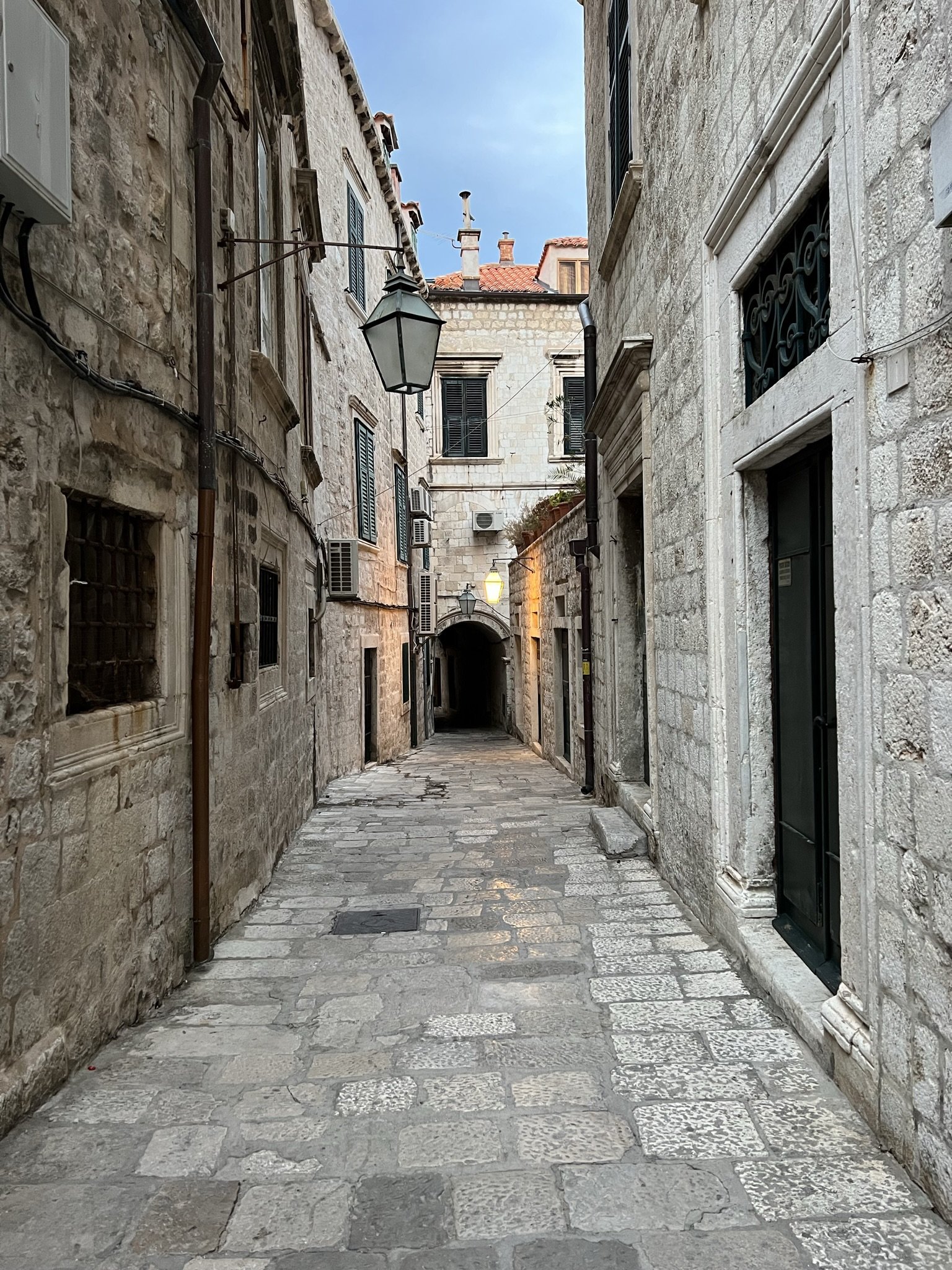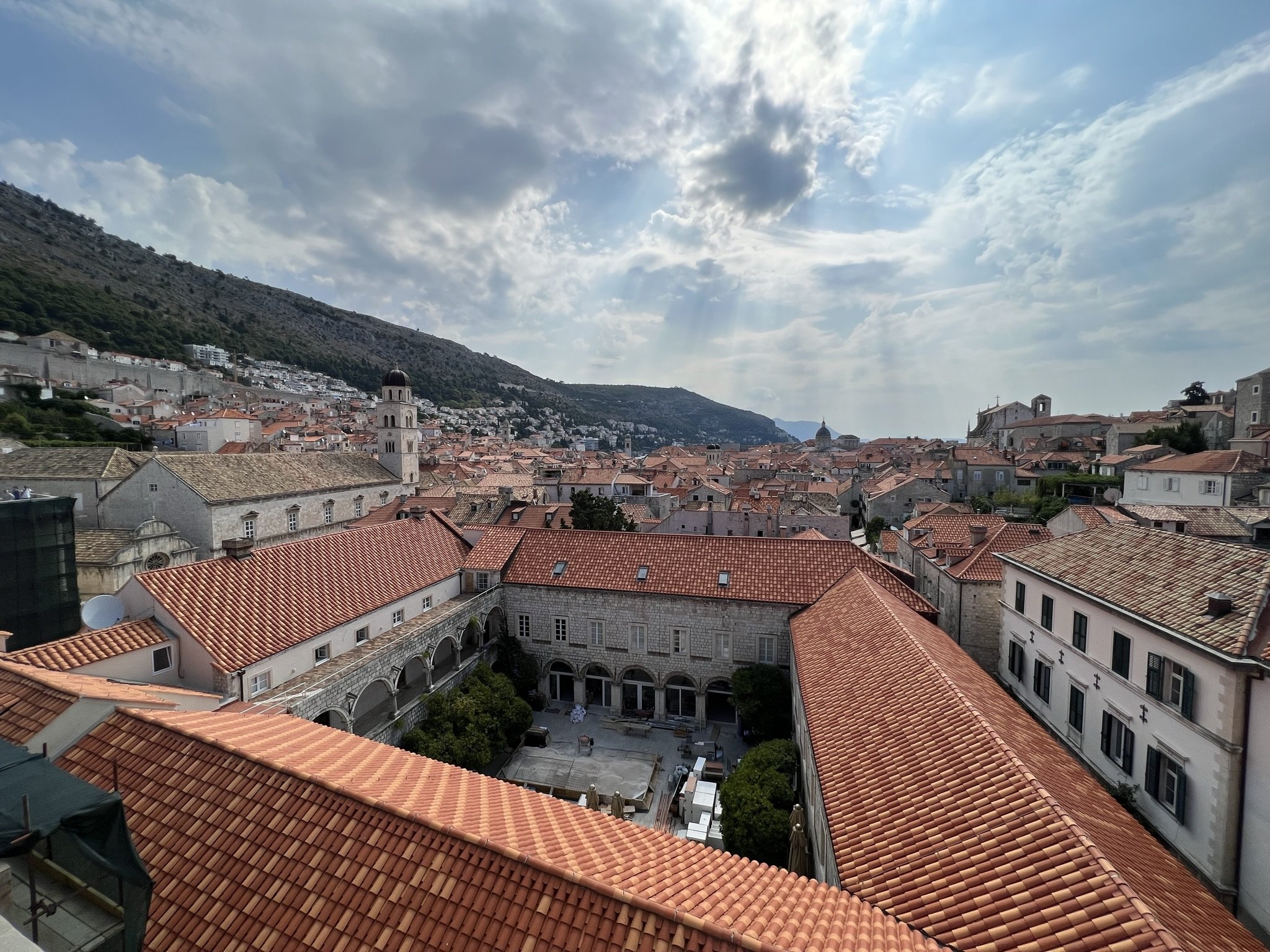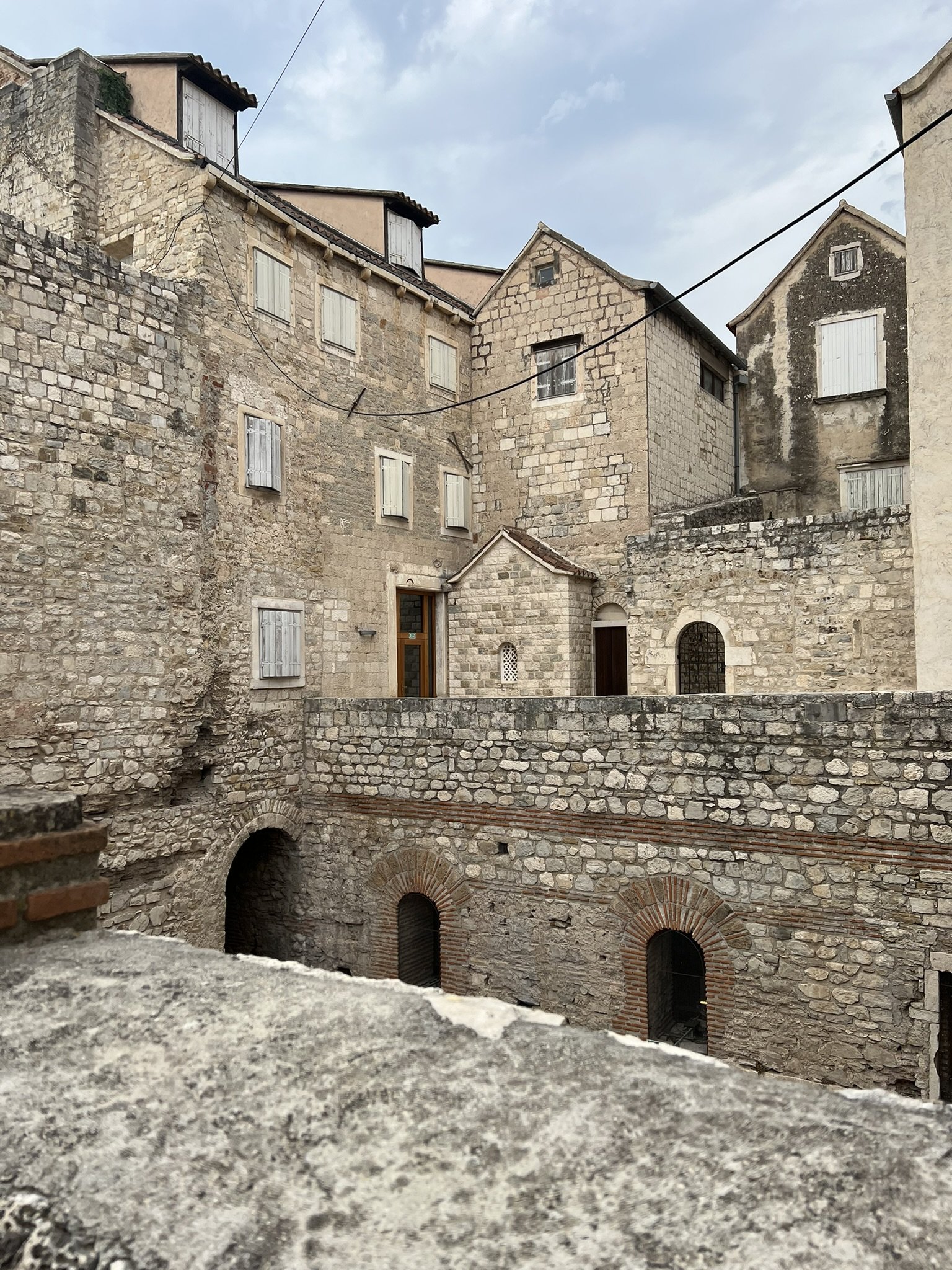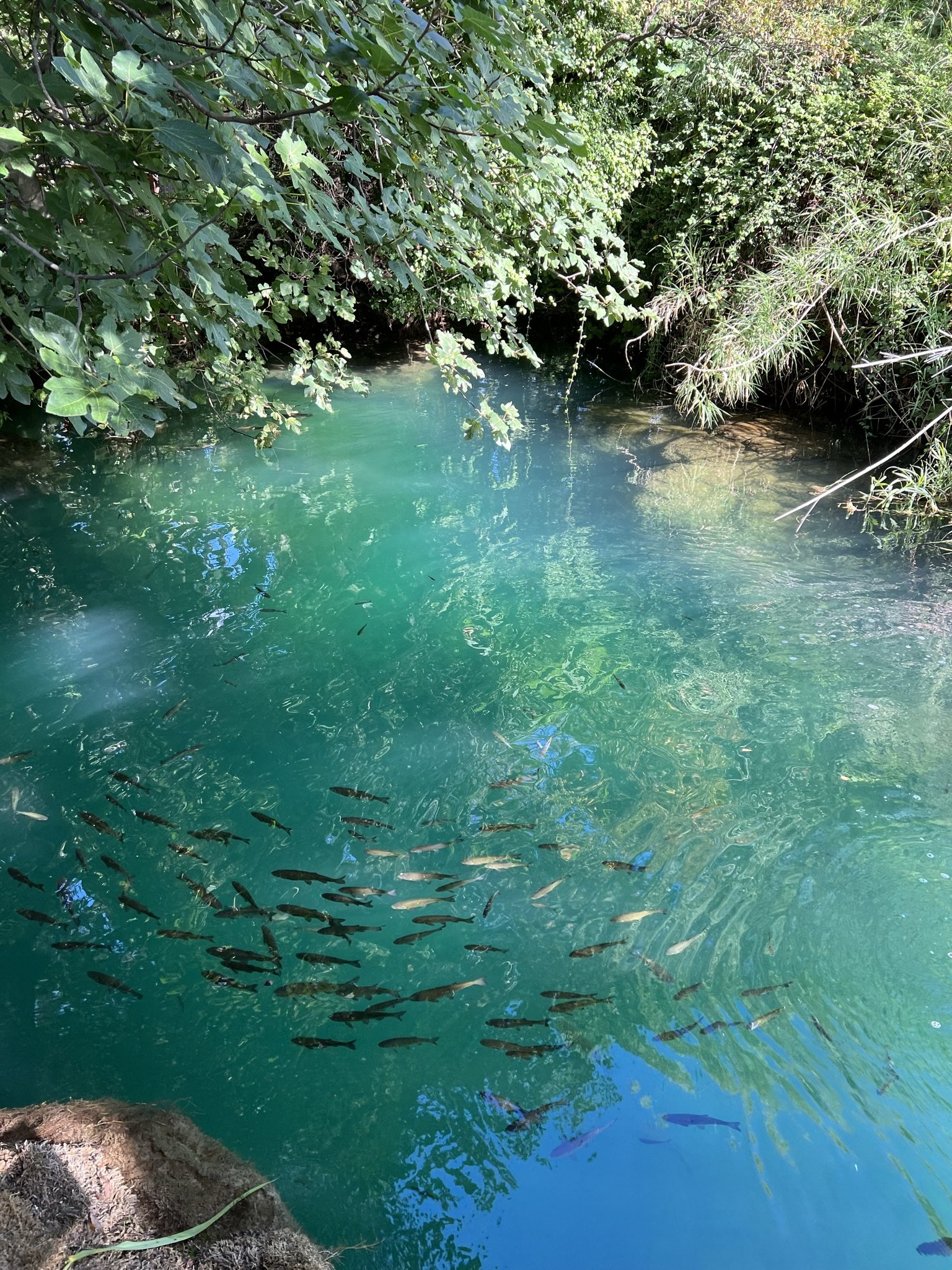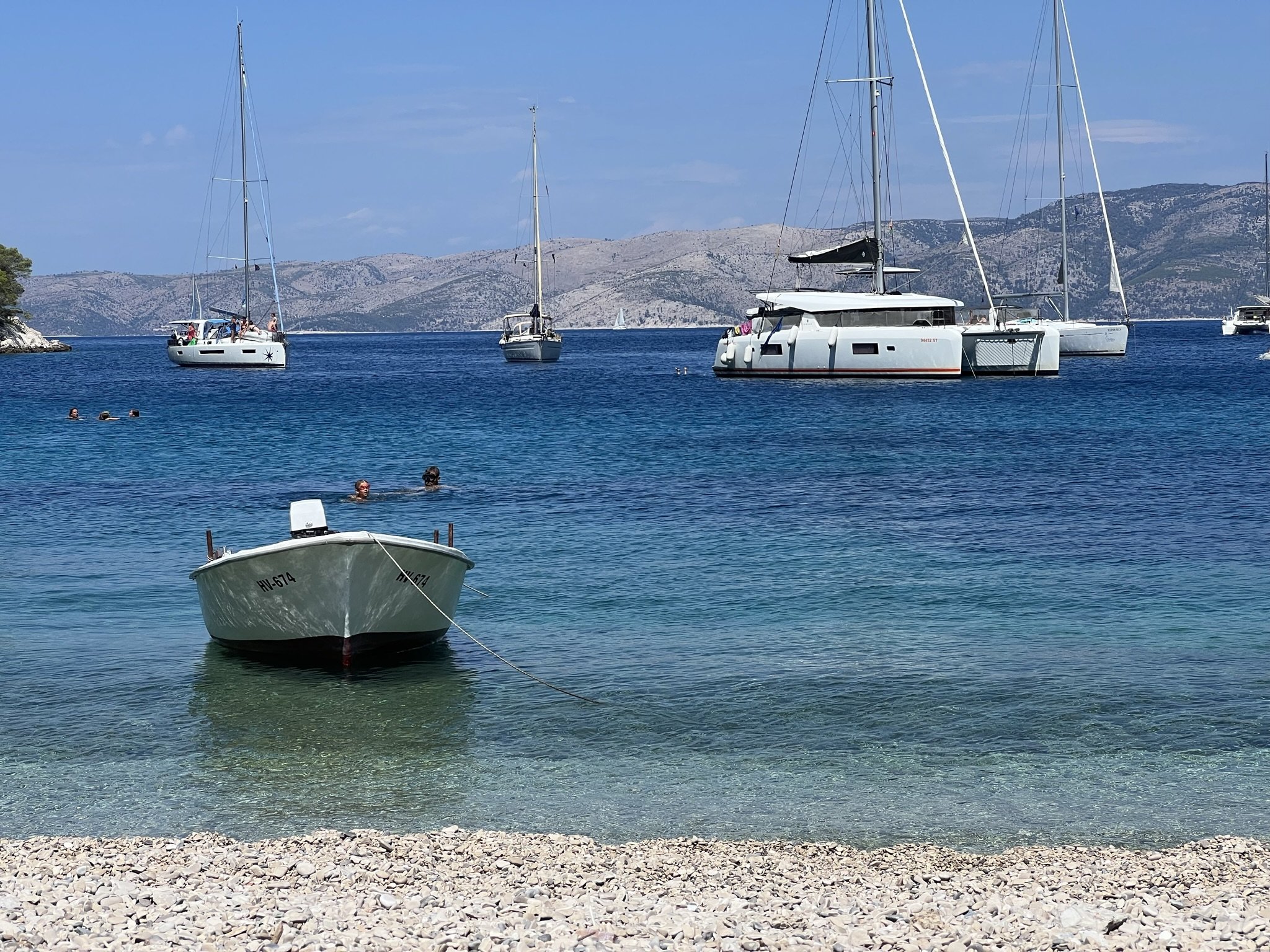Croatia, an Adriatic Beauty
Croatia, officially the Republic of Croatia, is one of the most visited tourist destinations in the Mediterranean. Tourism in Croatia is concentrated in the areas along the Adriatic coast and is strongly seasonal, peaking in July and August. Eight areas in the country have been designated national parks, with an additional eleven designated as nature parks. (National Parks and Reserves make up almost 10% of Croatia). Croatia is the 28th country admitted into the EU and boasts 10 UNESCO World Heritage Sites.
Croatia has a long and complicated history, it was ruled by Illyrian kings, Roman and Byzantine Emperors, Venetian rulers, Hungarian Kings, Ottoman Sultans, and Habsburg Monarchs. The Croats arrived in the late 6th century and were first internationally recognized as independent in June 879. The history of Croatia awes visitors with its wide variety of culture, cuisine, and natural and architectural wonders. Croatia is both a Central European and Mediterranean country, bordering Slovenia in the west, Hungary in the north, Serbia in the east, and Bosnia and Herzegovina in the south. Part of the country lies on the coast while the other rests in continental Europe.
In 1918 the Kingdom of Yugoslavia was proclaimed. Following the Axis invasion of Yugoslavia in April 1941, most of Croatia was incorporated into a Nazi-installed puppet state, the Independent State of Croatia. A resistance movement led to the creation of the Socialist Republic of Croatia, which after World War II became one of six members of the new Communist system, the Socialist Federal Republic of Yugoslavia. In June 1991, Croatia declared independence, and the War of Independence (Homeland War) was successfully fought over the subsequent four years. The tour guide we had for the walking tour of Dubrovnik had some incredible stories about life in Dubrovnik during this time. See below for more.
While once part of the former Yugoslavia, Croatia has been an independent country for over 25 years, and today is one of Europe's growing hot spots for international tourism. The people of Croatia are warm and friendly. Plus, the roads are easy to drive and road signs are often in English. During our week there, we drove almost 800 miles in Croatia and Montenegro without any problems.
Travelers to Croatia can explore its 1,185 islands, (only 48 of which are permanently inhabited) including the Dalmation Islands, known for pristine beaches, limestone cliffs, and clear crystal blue waters. Visitors can taste the freshness of locally grown organic produce, tour privately owned wineries and olive gardens, and marvel at the breathtaking colors of its famous lakes.
Croatia is so much more than just history, walled cities, and pretty beaches. Among the crowning jewels of Croatia is the National Park system, including Plitvice National Park and Krka National Park.
Throughout the country, foodies (great Italian food and pizza, as Croatia was once a part of the Republic of Venice), wine connoisseurs, and coffee lovers can find fine food, delectable wine, and strong java to enjoy. Also, many of Croatia’s ancient sites have served as filming locations for many TV shows and movies, most notably, the HBO show "Game of Thrones."
You might think all this beauty, history, and Hollywood appeal might come with a hefty price tag, but arguably the best part about traveling to Croatia is how budget-friendly it is. As it was part of Yugoslavia until 1991, the country has stayed off the beaten path for many travelers, making it an often overlooked vacation option.
Dubrovnik, Croatia
The 'Pearl of the Adriatic', situated on the Dalmatian coast, became an important Mediterranean sea power from the 13th century onwards. Although severely damaged by an earthquake in 1667, Dubrovnik managed to preserve its beautiful Gothic, Renaissance, and Baroque churches, monasteries, palaces, and fountains. Damaged again in the 1990s by armed conflict (The War of Independence) during which nearly 30% of the 820 buildings in the Old Town were destroyed or severely damaged, it is now the focus of a major restoration program co-ordinated by UNESCO.
Old Town Dubrovnik is completely surrounded by defensive walls and forts that were constructed in the 13th century. The walls and structures in the town were built between the fall of Constantinople in 1453 and the earthquake in 1667, known as the Golden Age of Dubrovnik. There are many Game of Thrones filming spots here, including Kings Landing.
The Old Town’s Stradun (or Placa) is the main street and is lined with shops, restaurants, and cafes and is among the most interesting parts of Dubrovnik. Old Town has many styles of architecture; Renaissance (Sponza Palace); Gothic (Rector's Palace which is a history museum now) and Baroque (St. Blaise Church). Make sure to wander down narrow side streets and alleys. With lots of shops, restaurants, gelato stands, cafes, plazas, and more, there are pleasant surprises around almost every corner.
The Walls of Dubrovnik are an iconic symbol of the city and have been wonderfully preserved to allow visitors to the red city from above. The walls run uninterrupted for 6,365 feet (1,940 meters), encircling most of the City, and there are a lot of steps that climb and decline during the 90-minute walk, reaching a maximum height of about 83 feet (25 meters)
When you walk on top of the walls, strolling from tower to tower, you get breathtaking views of the shimmering Adriatic Sea and Lokrum Island, the orange and red rooftops below, quiet streets and busy plazas, and the Stradum, plus the 1,000-year-old Lovrijenac Fortress (Fort Lawrence). Another interesting item for movie buffs, a scene from Star Wars Episode 8 was filmed on the Dubrovnik Walls
Gazing down at the fortified city, you’ll see Gothic and Renaissance churches, monasteries, Venetian palaces, and ornately carved fountains. Schoolboys kick soccer balls along narrow cobbled streets. Women hang their laundry in tiny courtyard gardens. And the jumble of red-tiled roofs is mesmerizing. Along the north side of the walls, the circular Minceta Tower is the highest point of the walls. Climb the narrow winding staircase to the top of the tower for the absolute best views in the town.
How To Get To Dubrovnik
Dubrovnik is a major tourist destination. As such, it’s easy to get to Dubrovnik by flights from Europe, cruise ships, trains, or by car from anywhere in the European Union.
Where to Stay in Dubrovnik
There are so many lodging options in and around Dubrovnik. We stayed at the Sheraton Dubrovnik Riviera, which was in Mlini (about 15 minutes from Dubrovnik Old Town). We enjoyed staying outside of Dubrovnik because it was a little slower-paced and less crowded. There are several lovely hotels right outside the old town walls, which would be extremely convenient, especially if you don’t want to rent a car. The HIlton Imperial is a historic old building and just a couple blocks from one of the city gates. Another option would be to stay within the Old Town walls, there are hotels, room rentals, and apartment rentals. If you decide to stay in this area, which would be amazing, keep in mind you will most likely be hauling your luggage through the busy streets (foot traffic only) or even carrying it up lots of stairs to get to your place of lodging. Another type of lodging we found interesting was there were many options for camping (tents, auto camping, RV) up and down the coast from Split through Montenegro!
What We Did in Dubrovnik
After a long day of travel, we arrived at the Sheraton Dubrovnik Riviera and spent the afternoon relaxing by the pool and walking along the resort's beach. We strolled along the beach walk, enjoying the view of the Adriatic Sea, and took time to enjoy our surroundings. We woke up the next day and headed to Dubrovnik Old Town to explore the Old Town and the City Walls.
We used Viator to find a local tour guide for a walking tour of the Old Town. As we’ve mentioned before, we find so much value in using a tour guide to point out interesting items, provide detailed information, and share personal stories. Our guide grew up in the Old Town and was a teenager during the siege of Dubrovnik. She was able to tell stories about what it’s like to live in a city that is being bombed, including living in the basement and wearing pots and pans over her head. After the tour, we spent the rest of the day in the Old Town, including walking the city walls. We recommend starting the day early, as the Old Town is fairly empty in the morning and gets busier and more crowded throughout the day because many cruise ships will port here. Also, we walked the city walls in the middle of the afternoon, at the hottest time of the day. While there are some places along the walls where you stop for some shade, a drink, or a bite to eat, walking the walls in the afternoon wasn’t smart on our part, we’d advise against doing that.
Red History Museum
25 years after the end of the Homeland War (War of Independence), the Croatian public is still deeply divided by its socialist history, a division sharpened by the traumas of war. The Red History Museum exhibits almost 50 years of socialist history in Croatia, from 1945 to 1990, and displays a unique interactive experience of everyday life in communist Yugoslavia - a very different time in Croatian history. Visitors can now explore and experience what it was like under the Yugoslav regime.
Took a Day Trip to Montenegro, Kotor Old Town
From Dubrovnik, it’s a two-hour drive and one border patrol check from Dubrovnik to Montenegro. Most of the very scenic drive has a good view of the Adriatic Sea and the Bay of Kotor. There are towns, such as Risan and Perast, along the drive that are good spots to stop for a short break. It’s not hard to find a place that serves great seafood and cold beers. Many of these places are right on the water, so on a hot day take your swimming suit with you!
There are two small man-made islands, Our Lady of the Rocks, in the Bay of Kotor. There are good viewpoints of these islands in Perast. You could also take a ferry to the islands from Perast. According to local legend, the islands began as a pile of rocks in July 1452 after two fishermen discovered an image of the Virgin Mary on a rock in the sea. This began a custom among local seamen who, while returning from each voyage, would lay a rock here. Over time, the island eventually rose from the sea. In 1630, a Catholic chapel was built here and the island was expanded by piling more rocks and sinking old ships. The custom is still alive today, as once a year locals take their boats out and throw rocks into the sea. The Roman Catholic Church that stands today, The Church of Our Lady of the Rocks, dates to 1722 and has many paintings and other pieces of art, plus a small museum.
The old Mediterranean port of Kotor, located on the Bay of Kotor is surrounded by fortifications built during the Venetian period. The exact time of foundation of the first settlement is not known. According to some sources, the oldest settled area dates back two thousand years, first being mentioned in 168 BC, when it was part of the Roman province of Dalmatia. Four centuries of Venetian domination have given the city the typical Venetian architecture, which makes Kotor a UNESCO World Heritage site.
The rich Montenegrin history, culture, and traditions can be found in Kotor Old Town. There are buildings dating back hundreds of years such as medieval Churches, Palaces, and Cathedrals. In addition, it also has various boutiques and trade shops. The Kotor Old Town is among the most well-preserved medieval urban areas in all of the Mediterranean. We regret not hiring a guide here, which would have allowed us to learn more about the history of Kotor.
Where We Ate in Dubrovnik
Taj Mahal in Old Town - Bosnian food, this was so good. Maybe our favorite restaurant during our four weeks in Europe.
Mlinar Bakery in Old Town
Mama’s in Old Town
Pizzeria Sturini in Mlini
Restaurant Poseydon in Mlini
Bar 23 in Mlini
What We Didn’t Do, But Will Next Time To Dubrovnik
Take the Cable Car to the viewpoint overlooking Dubrovnik
Visit Lokrum Island
Take a tour of the Elaphiti Islands
Spend more time driving around this wonderful country, including Mali Ston, Plitvice Lakes National Park, and Zagreb.
Split, Croatia
The largest city on the Adriatic Coast, Split has been under Roman, Venetian, Austrian, French, Italian, and Yugoslav rule. The Old City is a UNESCO World Heritage Site, and must-see historic attractions include Diocletian's Palace, the Cathedral of Saint Domnius, and the striking Grgur Ninski Statue. Take time to stroll along the Riva Harbor, browse through the Green Market, and sample the restaurants and wine cellars. There’s more to explore outside of Split in the way of natural beauty, including wineries, beaches, the Blue Cave and Hvar, Krka, and Plitvice Lakes National Parks, where scenes from "Game of Thrones" were filmed.
How To Get To Split
You can get to Split, Croatia’s second-largest city, by any mode of transportation; planes, trains, cars, cruise ships, or buses! Our journey began in Dubrovnik, so we arrived here after driving our rental car from Dubrovnik. On the way from Dubrovnik to Split, we stopped for lunch at Koruna Restoran in Mali Ston. We viewed Mali Ston as merely a stopping point for lunch on the drive from Dubrovnik to Split. However, we wish we had spent a full day here, hiking the old city walls and enjoying the great seafood.
Where to Stay in Split
We stayed at the Le Meridan Lav, which was in Podstrana (about 15-20 minutes from Split Old Town). Again, we enjoyed staying outside of Split because it was a little slower-paced and less crowded. If you want to stay near the old city, there are several boutique hotels right outside the old town walls, which would be highly convenient, especially if you don’t want to rent a car. Another option would be to stay within the Old Town walls, there are hotels, room rentals, and apartment rentals. If you decide to stay in this area, which would be amazing, keep in mind you will most likely be toting your luggage through the busy streets (foot traffic only) or even carrying it up lots of stairs to get to your place of lodging. Another type of lodging we found interesting was there were many options for camping (tents, auto camping, RV) up and down the coast from Split through Montenegro!
What We Did in Split
Admire the Stunning Architecture of Diocletian’s Palace
Diocletian’s Palace was built for the Roman Emperor Diocletian during the 4th century AD. A well-preserved UNESCO World Heritage Site, the palace is home to notable attractions such as the Cathedral of Saint Domnius (offering magnificent views from its tower), Temple of Jupiter, Peristyle Square, and a statue of Marko Marulic – the founder of Croatian literature. Game of Thrones fans might notice that the palace basement was used as a filming location. Again, we used Viator to hire a local guide.
Stroll the Cobblestone Streets of Old Town Split
One of the best things to do, especially on first visits, is to visit the famous Pjaca Square (People’s Square), which is just outside the gate to Diocletian’s Palace and is home to the city’s town hall. You can admire the stunning architecture from the Venetian era. The Old Town has many cute restaurants and cafes where you can unwind with a drink or two or stop for ice cream or gelato. Walk along the beautiful Marmont Street, where you can find boutiques and jewelry stores by international brands.
Wander through the Green Market
Located on the eastern side of the city walls, the Split Green Market is a bustling place where locals come to shop for groceries. Locally known as Pazar, the market offers fresh fruit, vegetables, homemade cheese, and cured meats, as well as spirits, beachwear, and souvenirs.
Took a day trip to Krka NP and visited a winery
Krka National Park is about 1.5 hours from Split. Named after the Krka River, the Park is famous for its lush green vegetation and imposing waterfalls. We did a day trip to Krka National Park while we were in Split, and it was one of the best days of our entire trip. The park and waterfalls are simply breathtaking and are considered by many as one of those must-see Croatian destinations that should be a part of every Croatia itinerary. The hour-long loop follows boardwalks that connect little islands in the emerald-green, fish-filled river and ends at the park's largest and most recognizable waterfall, Skradinski Buk, whose 800m-long cascade descends by almost 46m before crashing into the lower lake.
It’s possible to spend an entire day wandering around the paths of the national park, admiring the beautiful views and immersing yourself in nature. There’s a wide variety of both flora and fauna in the Park. Over 800 species of plant life have been identified as being present in the National Park. Much of the animal life lives, unsurprisingly, in and around the waters of the Krka River which is home to different amphibian and reptile creatures. You will also be able to see many different bird species (there are over 200), and possibly some of the 18 different species of bats that call the Park their home!
Get there at the Park opening to avoid cruise ship tourists!! We arrived 15 minutes after the Park opened and enjoyed a peaceful 30 minutes before we wandered off the main trail for a scenic view. After our side trip, we returned to the main Park trail and were behind what seemed like hundreds of cruise ship passengers. This ruined our peaceful expedition and we were suddenly in the middle of a mass crowd.
In addition to the falls found at Krka National Park, we drove along the Krka River to a spot where we grabbed a ferry to the tiny island of Visovac, in the Krka River. Visovac was settled by Franciscan monks in 1445. The monks built a monastery in that year, which was later demolished and rebuilt in the 18th century, and a church in 1576. The monastery contains a number of well-preserved artifacts and a library.
The Dalmatia area in Croatia is known for some great wines. We visited Rak Winery, a small family-run winery with a quaint tasting room, after our visit to Krka National Park. We sampled the 6 wines they offered at the time and enjoyed some local meats and cheeses. Our host was a member of the family that owned the winery and spent a lot of time with us explaining how the different wines were made and gave us a great lesson on the operation of the vineyard.
Took a full-day boat tour of 3 islands
We used Viator again to book a full-day boat tour to the islands of Brac, Hvar, and Solta. Brac was our first stop, where we swam in a pretty bay and near one of the Yugoslavian submarine tunnels that are scattered across islands in the Adriatic Sea. The town of Stari Grad on the island of Hvar was the next stop. We walked along the waterfront, wandered down some side streets and through some plazas, did a little shopping, went through the Stari Grad museum, and sat down for a cold drink and some ice cream at a cafe. After Stari Grad, the boat took us to an amazing bay on the island of Hvar where we were able to relax on the pebble beach, swim in the clear blue water, and have a lunch of freshly caught seafood. The last stop was Necujam Bay on the island of Solta. A few years ago a ship was sunk here in ten feet of water, which makes this a popular snorkeling spot. A local entrepreneur has turned his boat into a floating mojito bar and he visits each incoming boat to offer up a cold drink.
Where We Ate in Split
Pizzeria Bokamorra in Split is the best pizza place we found in the area.
Bokun in Split
Konoba Bava in Stobrec
Pizzerija Margarita in Stobrec
7 Palms at Le Meridan Lav
Restoran Visovac in Skradin
What We Didn’t Do, But Will Next Time To Split
Take a boat tour to the Blue Lagoon and Blue Cave.
Spend more time driving around this wonderful country, including Mali Ston, Plitvice Lakes National Park, and Zagreb.








